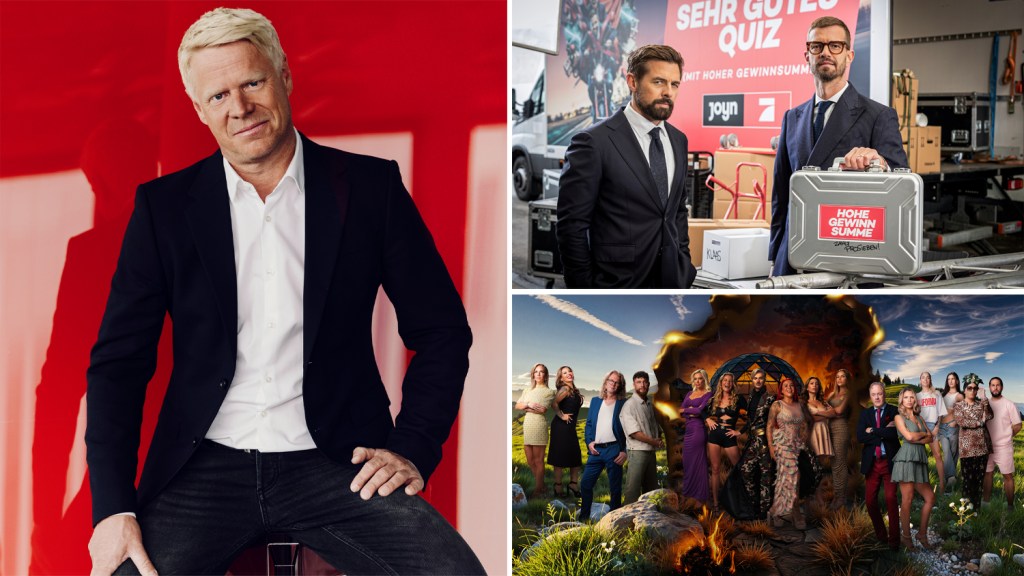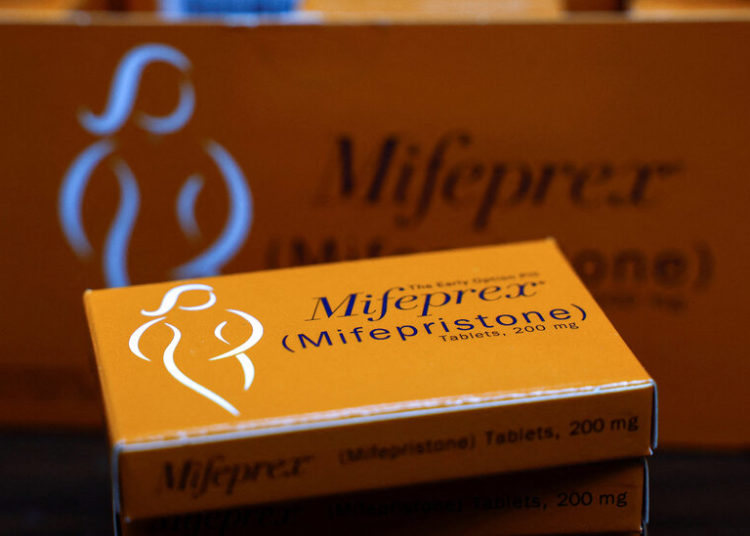Of all the European broadcasters trying to figure out the future for their businesses in the digital and streaming era, few have been on as much of a rollercoaster ride as Germany’s ProSiebenSat.1 Media.
Battered by the global TV advertising downturn and shareholder squabbles, the company has been attempting to pivot to a digital-first model centered around streamer Joyn, while at the same anchoring its overnight ratings and build sellable global formats. ProSieben’s future ownership was recently decided when Italian shareholder MediaForEurope secured more than 75% of the voting shares and took control, but that has led to more questions.
German ministers and regional politicians quickly made clear their reservations about far-reaching changes following the takeover of the Unterföhring-based company, and MFE‘s bosses offered them assurances. However, last week the Italian consolidator swung the axe and replaced the entire C-suite, including CEO Bert Habets, and ported Nicola Lussana in to run ad sales biz Seven.One Media. The grip appears to be tightening.
Despite the corporate wrangling, ProSieben has been quietly going about its day-to-day operations, which include broadcast networks such as Sat.1, known for its Joko and Klaas game shows; Joyn, home of buzzy upcoming reality series Die Abrechnung – Der Promi-Showdown (The Reckoning – Celebrity Showdown); a handful of production companies in Europe such as Red Seven Entertainment and the UK’s CPL Productions; and program sales operation Seven.One Studios International, which was at MIPCOM shopping the likes of dating format Match My Ex, competition show The Race, scripted series such as The Cooking Academy and Frier & 50 and perennial format hit Married at First Sight.
At the Cannes market, we caught up with ProSieben’s Henrik Pabst, CEO of production and program sales arm Seven.One Studios and Chief Content Officer for Entertainment at networks and streaming division Seven.One Entertainment, who addressed issues such as the company’s journey to a digital-first entertainment giant and life under the new ownership.
We spoke before MFE had made its move to instal its own CFO, Marco Giordani, as ProSieben CEO, but Pabst’s insight still gives an idea of where the story is going next. Known as one of international TV’s most colorful, insightful and uniquely-spoken programming execs, his turn of phrase and read on the global market are always worth attention.
The chat also spans the creator economy, the concept behind streamer-for-all service Joyn and his views on market-changing deals such as Netflix and TF1‘s channels and streaming pact in France. “We’re in a world where every kind of partnership needs to have been looked at very carefully,” he says.
Below is a Q&A, which has been edited for clarity and length.
DEADLINE: Over the past few years, the narrative around ProSiebenSat.1 Media has been dominated by the corporate structure, which has now been decided. I’m interested to hear what’s been happening at the network level as this narrative played out?
Henrik Pabst: This year, the channels grew market share. It is a non-sport year, but we’ve done some things rights. Sat.1 is coming back pretty strong with a show called Villa der Versuchung, a reality show where people lose money that comes out of the prize pot as they spend it. What was interesting is it really smashed the ratings on linear, but also on Joyn. When you look at the total video view time on that, it was nearly 50-50. This is one of the rare examples of a linear hit that also has a large proportion of viewing in streaming. That is good. What is bad is the ad market. For the third year in a row, there is a recession in Germany, and this needs to change. German economics are really in the pits. It’s a mess. On the other hand, Joyn is doing fantastic, with 30% growth for users and usage. That’s a good number, better than the market. Clearly the big corporate topic has been dictating our lives. Now with MFE being on board, I am happy.
DEADLINE: Why does that make you happy?
HP: I believe in times of market pressure, scale matters. We are in three big European [German-speaking] markets and five in total through this European broadcast and streaming giant. Let’s see how we can hone that into a strategy that can cope with the things going on.
Are you speaking with the leaders at MFE at this moment?
HP: Not right now, but I’m sure we’re starting soon. MFE is thinking about how to structure it all. What is the best tactic? What is the best data game? What’s the best IP game? What’s the best advertising approach in Europe and for European funds? How do we tackle the content game for acquisitions? How do we work together on AI? In my view, all of these things can be good if we do them together.
DEADLINE: Some of the German journalism unions were concerned about the MFE approach to ProSieben. What can you tell us about that?
HP: Of course, it was a big question mark. I can tell you I see no signs of influence – full stop, 100% guaranteed. MFE wants us to make more local content, and I’m very confident there will be no interference in the content itself. Will they have questions about where we spend our money? Yes, I would have questions if I acquired a company of our size, and that’s fair enough. After all the conversations with our shareholders, I am very happy to have them. Let’s work together.
DEADLINE: What does the future look like then? You’re looking at changing the story to focus on content.
HP: Exactly. Will there be a European studio approach out of all of these countries? Maybe. Do we want to invest more by opening up our grids for IP launches? We would like to, but have to factor in market developments. We believe IP ownership is the way forward, and we now have three big commercial outlets to try that out. MFE’s rationale is fair, so let’s work it out.
DEADLINE: How does the Seven.One Studios business fit into this?
HP: After we sold the U.S. part of the business three years ago, Seven.One Studio has become a pretty agile, fast-moving production house of seven production businesses and a distribution arm launching IP year-on-year. Last year at MIPCOM, we had Stranded on Honeymoon Island and this year we present The Hunt, which will be on Channel 4 and ProSieben. It’s a great example of how we work together – [Seven.One producers] CPL and RedSeven working on an idea, making it happen and retaining the rights so that we can monetize them all the way down the line. Besides that, we have grown into the area I think is the future of content: The creator world. We started in this world three years ago when we began acquiring rights from creators to preview their shows on Joyn. You don’t find these audiences via TV channels. You approach them in the right place with the right topic for their communities.
DEADLINE: What is the volume like there?
HP: We have 25 creator shows on Joyn each year. We’ve got a very cost-efficient way of producing things. It’s also about learning to look at the size of productions. In five years time, why would I fly in 140 people for a reality format to Thailand? The Race just won the Best Entertainment category at the Bavarian TV Awards, a very high-profile award in Germany. We acquired the rights and took it as a centerpiece of our new production company Studio Flitz, which is fully focused on creator content. Thomas Munzner, who runs it, has a very good economic understanding of what he needs to do, and why in times where cost efficiency is maybe the number one priority of all of us, we can deliver cases to ProSiebenSat.1 that are different to the old world. Those ideas do not look much worse than classical productions. They’re buying rights to established IP, but then they do it their way.
DEADLINE: What do shareholders make of the creator economy? Is it a harder sell for them, when they’re used to TV or film production?
HP: It’s not hard to sell. 7 Vs Wild was produced primarily for YouTube back in the day, and has now been sliced and diced down for Amazon. There is a real possible margin gain here. When you produce them right, and sell them on to streamers and possibly linear, then there is a good business. A few weeks ago at the studio, we showcased a couple of projects with Thomas, and everybody was listening. If there are a generation of people who can help them hit the price points broadcasters and streamers want, that helps their margins. It’s a good thing and we should embrace that.
DEADLINE: There are still plenty of industry people I speak to who don’t quite understand Joyn as a concept. It’s been made the central part of your entertainment strategy, so how do you explain it to someone who doesn’t get it?
HP: From a monetization perspective, we are the biggest AVOD service in Germany, and we have an SVOD tier, but it is small and not the priority. Joyn is a place where you find all the content you want, whether that’s lifestyle channels, FAST channels of different genres, all the ProSiebenSat.1 brands and a high volume of Joyn originals, plus the creator base. We’re there for every target group, and we cluster that down in different content verticals. We have to use the ecosystem of a strong linear broadcasting organization that is transforming into a super-streaming organization.
DEADLINE: That helps with the ad sale, right?
HP: It does. What we have done quite successfully is change the grid towards really strong hybrid shows. When you limit yourself as a TV broadcaster, you miss out. That’s Joyn.
DEADLINE: On the sales side, MD Tim Gerhartz left over the summer to rejoin ZDF. How have you restructured since then?
HP: As a mid-sized distribution company, we are concentrating on harvesting IP across all value chains. I do not believe Seven.One Studios International, with the profile of our companies, will be a big scripted player going forward. Tobias Schulze, who is a very senior sales executive, is the one who is running it now and I give the directions. I love Tim… He is by far the most German person on the planet. He came from ZDF back in the day, and now he’s gone back there, and I wish him all the best.
DEADLINE: What do you think about Netflix and Amazon doing deals with broadcasters like TF1? It seems with Joyn, you’re already set up to do that, and if anything, you’re the ones looking to add other linear channels – you had German pubcasters ZDF and ARD on the service at one point.
HP: We’re in a world where every kind of partnership needs to have been looked at very carefully, and this needs to be looked at very carefully. Are there audiences that we do not reach within our ecosystem that we want to be in contact with? If yes, we carefully look at them. Does it mean we’ll do them straight away? No, but are we a closed shop that isn’t open to partnerships? We are not. We have to be flexible as there is no one-size-fits-all. The TF1 deal with Netflix really caused some [anxiety] in the market. If TF1 brings new movies on to Netflix, does Netflix not have to acquire them anymore? I know my friends at Universal will have a hard time getting that. There are some unanswered elements.
The post ProSiebenSat.1’s Henrik Pabst On The Battle Facing Europe’s TV Giants In The Streaming Era appeared first on Deadline.




